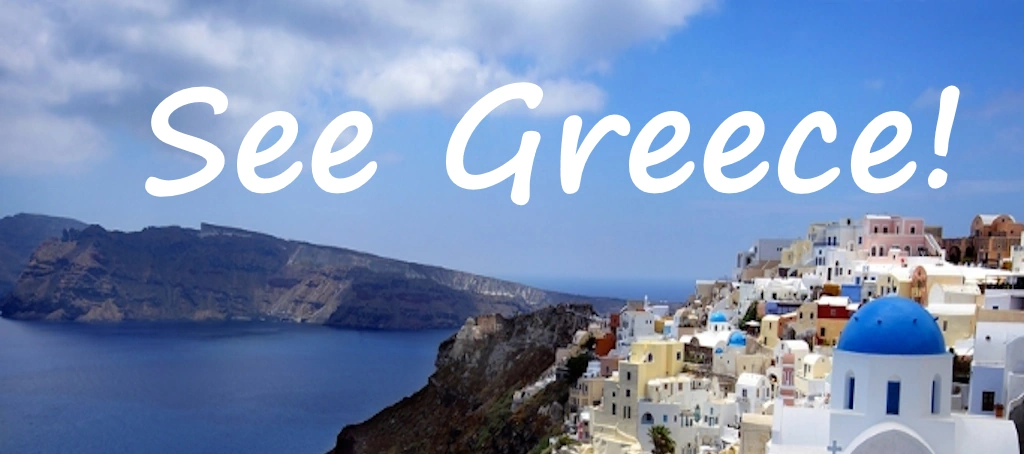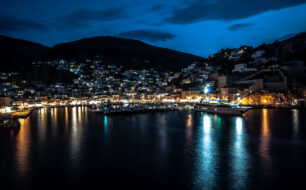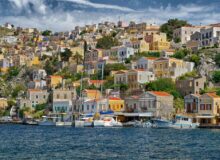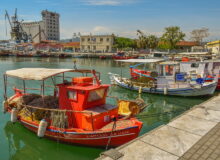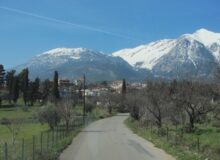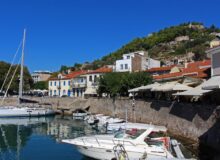The See Greece guide to the island of Hydra with a brief history and travel information on how to get there by ferry or by air and what to see and do.

Introduction
Nestled in the sapphire waters of the Saronic Gulf, Hydra (Ύδρα) is one of Greece’s most enchanting islands. Known for its well-preserved architecture, car-free streets, and artistic legacy, Hydra offers a serene escape from the hustle of modern life. This guide covers everything you need to know about the island—from its fascinating history to the best things to see and do, as well as how to get there by air and ferry.
Where is Hydra Located?

Hydra is part of the Saronic Islands, a group of islands near Athens in the Aegean Sea. It lies between the Peloponnese peninsula and the island of Poros, approximately 65 km (40 miles) southwest of Athens. The island is small, spanning just 52 km² (20 mi²), with a coastline dotted with secluded coves and pebbled beaches.
Due to its proximity to Athens, Hydra is a popular weekend getaway for both locals and international travelers seeking a tranquil retreat.
A Brief History of Hydra
Ancient Times to the Middle Ages
Hydra’s history dates back to antiquity, though it was never a major player in ancient Greek civilization due to its arid landscape and limited resources. The island was known as Hydrea (meaning “water”) in ancient times, a reference to its natural springs.
During the Byzantine and Venetian periods, Hydra remained sparsely populated, often targeted by pirates due to its strategic location.
The Rise of Hydra’s Maritime Power (18th–19th Century)
Hydra’s golden age came in the late 18th and early 19th centuries when it became a major naval force under the Ottoman Empire. Wealthy shipowners and merchants built grand mansions, and the island’s fleet played a crucial role in the Greek War of Independence (1821–1829).
Famous Hydriot naval leaders like Admiral Andreas Miaoulis led successful campaigns against the Ottomans, making Hydra a symbol of Greek resistance.
Decline and Revival as an Artistic Haven
After Greece gained independence, Hydra’s importance waned as steamships replaced sailboats. The island fell into decline until the mid-20th century, when artists and intellectuals—including Leonard Cohen, Sophia Loren, and Axel Jensen—discovered its charm. Today, Hydra is a cultural hotspot, attracting writers, painters, and travelers seeking inspiration.

What to See and Do on Hydra
1. Explore Hydra Town (Chora)
The island’s main town is a postcard-perfect labyrinth of stone mansions, narrow alleys, and bougainvillea-draped courtyards. Key highlights include:
– Harborfront (Port of Hydra): The heart of the island, lined with cafes, tavernas, and yachts.
– Historical Archives Museum: Showcasing Hydra’s maritime history.
– Kountouriotis Mansion: A beautifully restored 19th-century mansion turned museum.
– Cathedral of Hydra (Dormition of the Virgin Mary): A stunning Orthodox church with a marble bell tower.
2. Visit the Monasteries
– Profitis Ilias Monastery: A scenic hike (about 1.5 hours) rewards you with panoramic views.
– Agia Efpraxia & Agios Matrona Convent: Peaceful retreats with beautiful gardens.

3. Discover Hydra’s Beaches
Since Hydra has no sandy beaches, expect pebbled shores and crystal-clear waters:
– Spilia: A seaside bar with a rocky swimming spot.
– Kamini: A quiet fishing village with a small beach.
– Vlychos: A tranquil pebble beach, accessible by boat or a 30-minute walk.
– Bisti & Agios Nikolaos: Remote beaches best reached by water taxi.
4. Take a Boat Tour
Explore hidden coves and nearby islands like:
– Dokos: An uninhabited island with ancient shipwrecks.
– Monkey Island (Pitstop for yachters).
5. Enjoy Hydra’s Nightlife & Dining
– Sunset Drinks: Pirate Bar, Hydronetta.
– Fine Dining: Omilos, Techne.
– Traditional Tavernas: To Geitoniko, Xeri Elia.

6. Hiking & Donkey Rides
With no cars, transportation is by foot, donkey, or water taxi. Popular trails include:
– Hydra Town to Kamini & Vlychos (easy coastal walk).
– Mount Eros (Hydra’s highest point, challenging hike).
How to Get to Hydra
By Air
Since Hydra has no airport, the closest options are:
1. Athens International Airport (ATH) – The main gateway.
– From Athens, take a taxi/bus to Piraeus or Metochi (Peloponnese) for ferries.
2. Ermionida Airport (Not fully commercial, private charters only).
By Ferry
Ferries are the best way to reach Hydra. Routes include:
From Piraeus (Athens) to Hydra
– Duration: 1.5–2 hours (high-speed), 3–4 hours (conventional).
– Operators: Hellenic Seaways, Alpha Lines, Saronic Ferries.
– Frequency: 2–4 daily departures (more in summer).
From Other Saronic Islands
– Poros → Hydra: ~1 hour.
– Spetses → Hydra: ~1.5 hours.
From the Peloponnese (Metochi, Ermioni, Porto Cheli)
– Ermioni → Hydra: 30–40 mins (frequent boats in summer).
Tips for Ferry Travel
– Book in advance in peak season (July–August).
– Arrive early for seating (especially on deck).
– Pack light—no cars mean cobbled streets & stairs.

Final Tips for Visiting Hydra
– Best Time to Visit: May–June & September–October (fewer crowds, pleasant weather).
– Currency: Euro (€). ATMs available but limited.
– Language: Greek, but English widely spoken.
– Packing: Comfortable shoes (lots of walking), swimwear, sun protection.
